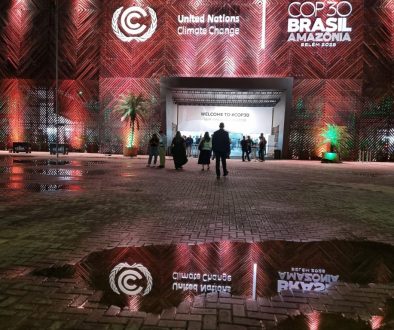Sappi delivers solid results in difficult economic climate
Commenting on the group’s results, Sappi Chief Executive Officer Steve Binnie said: “Within the context of ongoing challenging global macroeconomic conditions and weak paper markets I am pleased that the group delivered EBITDA of US$156 million, which was in line with guidance provided in the prior quarter.”
Profitability was negatively impacted by approximately US$45 million due to the lower production volumes associated with the planned maintenance shutdowns at the Saiccor, Ngodwana and Cloquet Mills offset somewhat by a US$26 million positive plantation fair value price adjustment.
A key element of Sappi’s Thrive strategy is to reduce exposure to declining graphic paper markets and to ensure higher capacity utilisation in its graphic assets. The rationalisation of its European graphic paper’s capacity gained momentum during the quarter with the closure of the Stockstadt Mill and subsequent fluctuation of sales volumes to alternate assets.
The consultation process for the closure of the Lanaken Mill was also concluded late in the quarter. Looking forward, Binnie stated: “Taking into account the protracted macroeconomic uncertainty, we anticipate that EBITDA for the second quarter of FY2024 will be similar to that of the first quarter.”
Financial Summary for The Quarter
- EBITDA excluding special items US$156 million (Q1 FY23 US$290 million)
- Net debt US$1,216 million (Q1 FY23 US$1,241 million)
- EPS excluding special items 8 US cents (Q1 FY23 30 US cents)
- Production at Stockstadt and Lanaken Mills in Europe permanently ceased
Paper markets remained unpredictable, and demand was still under pressure from low consumer confidence, high interest rates and ongoing geopolitical instability. While group sales volumes were down 12% compared to the prior year, selling prices during the quarter were reasonably stable for most products. Sappi achieved significant year-on-year cost savings across all regions to mitigate some of the impact of lower sales.
Demand for dissolving pulp (DP) was robust, buoyed by high downstream viscose staple fibre (VSF) operating rates in China.
Despite favourable demand and tight supply dynamics, the hardwood DP market price continued to be range bound by subdued VSF fibre selling prices due to sluggish textile and apparel markets, especially in Europe and China, influenced by low consumer confidence. The scheduled maintenance shutdowns during the quarter at all three DP mills impacted profitability for the segment and reduced sales volumes to 6% below the prior year.
Profitability of the packaging and speciality papers segment was impacted by lower South African containerboard sales due to the planned maintenance shut at the Ngodwana Mill, sluggish underlying European demand and residual destocking across a number of product categories.
On a positive note, demand for paperboard in North America showed signs of recovery as customer inventories normalised. Sales volumes for the segment were 14% below the prior year.
Graphic papers demand showed signs of a muted recovery from the lows of the third quarter of FY2023 as downstream inventory levels normalised through the supply chain. Sales volumes were 14% below last year but improved by 6% compared to the prior quarter.
The performance of the European business improved from the low of the prior quarter as sales volumes increased. Graphic papers sales volumes increased 9% quarter-on-quarter as downstream inventory levels slowly normalised. Market conditions for the packaging and speciality papers segment remained challenging driven by substantially reduced demand for consumer goods in the European region.
Within the context of tough market conditions, the North American business delivered another solid set of results, notwithstanding the scheduled maintenance shutdown at the Cloquet Mill. Demand in paper markets continued to slowly recover.
The South African business delivered a good performance for the quarter taking into account the negative impact of the planned maintenance shutdowns at the Ngodwana and Saiccor Mills. Profitability was supported by a weaker Rand/US dollar exchange rate, which benefited the pulp segment, and the inclusion of a positive ZAR484 million plantation fair value price adjustment.
Sappi recognises that its forestry assets are an integral part of the South African business and it has therefore taken the decision to include the forestry valuation in its EBITDA, thereby aligning with many of its peers.
Outlook
The global economy has yet to show signs of significant improvement and we anticipates demand for many of Sappi’s products will continue to be impacted by weak consumer sentiment and low economic growth. Order activity for paper products is slowly improving and it appears the extended destocking cycle has concluded across the majority of its key product categories.
Dissolving pulp demand remains robust supported by high VSF operating rates and a positive differential between VSF and cotton pricing.
The seasonal slowdown of the textile industry in China associated with the Lunar New Year celebrations has historically exerted short-term pressure on DP pricing in the second quarter. However, Sappi anticipates that underlying textile demand will likely drive positive pricing momentum after the holiday period, further supported by a tight DP supply landscape.
Packaging and speciality paper markets in North America and South Africa are steadily improving. European markets remain weak, and recovery may take longer in this region. Although Sappi anticipates a further small rebound in graphic papers sales volumes through FY2024 as value chain inventory levels normalise, the company believe that the market remains in oversupply.
Sappi will complete the restructuring and closure of the Lanaken Mill during the second quarter and anticipates that reduced fixed costs and improved capacity utilisation in the remaining European assets will yield significant cost savings through the second half of the year.
Cost inflation remains a risk in the second quarter as paper pulp prices are rising. In addition, the Middle East conflict is impacting shipping routes will likely increase logistics costs for the business.
Capital expenditure for FY2024 is expected to be in the region of US$500 million and as previously communicated, includes approximately US$154 million for the Somerset PM2 conversion and expansion project.
The company anticipates a substantial cash outflow in the second quarter related to the closure of the two European mills and the dividend payment. Sappi is well positioned with healthy cash reserves and liquidity to fund this outflow.
Good progress is being made in Sappi’s key strategic focus areas to reduce exposure to graphic papers and grow its packaging business. The European restructuring programme and capital investment in North America to increase its paperboard capacity will strengthen Sappi’s long-term competitive position and deliver sustained value for its stakeholders.




